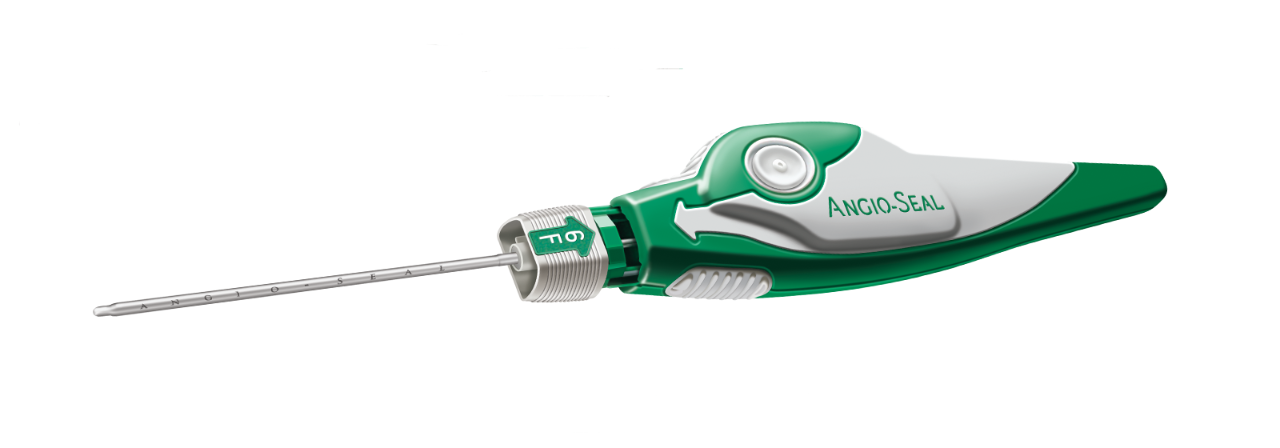Manufacturer > Terumo Interventional Systems > Devices > ANGIO-SEAL® EVOLUTION™ Vascular Closure Device
ANGIO-SEAL® EVOLUTION™ Vascular Closure Device
Device-Type
Closure Devices
Manufacturer
Terumo Interventional Systems
The Angio-Seal™ Evolution™ Vascular Closure Device consists of the Angio-Seal Evolution Device, an insertion sheath, an arteriotomy locator (modified dilator) and a guidewire. The Angio-Seal Evolution Device is composed of an absorbable collagen sponge and a specially designed absorbable polymer anchor that are connected by an absorbable selftightening suture (STS). The device seals and sandwiches the arteriotomy between its two primary members, the anchor and the collagen sponge. Hemostasis is achieved primarily by the mechanical means of the anchor-arteriotomy-collagen sandwich, which is supplemented by the coagulation-inducing properties of the collagen. The device is contained in a delivery system that stores and then delivers the absorbable components to the arterial puncture. The delivery system features a device handle with a gear driven collagen compaction mechanism that facilitates proper technique for delivery and deployment of the absorbable unit. The implanted components of the device are MRI Safe. The product is not made with natural rubber latex.
INDICATIONS
The Angio-Seal Device is indicated for use in closing and reducing time to hemostasis at the femoral arterial puncture site in patients who have undergone diagnostic angiography procedures or interventional procedures using an 8 French or smaller procedural sheath for the 8F Angio-Seal Device and a 6 French or smaller procedural sheath for the 6F Angio-Seal Device. The Angio-Seal Device is also indicated for use to allow patients who have undergone diagnostic angiography to ambulate safely as soon as possible after sheath removal and device placement. The Angio-Seal Device is also indicated for use to allow patients who have undergone an interventional procedure to ambulate safely after sheath removal and device placement.

STEP-BY-STEP INSTRUCTIONS
LOCATE THE ARTERY
Exchange procedure sheath with Angio-Seal locator system.
- Blood flow through the locator confirms sheath has entered the artery.
- Confirm proper location by withdrawing and reinserting the Angio-Seal locator system until blood flow resumes and then STOP.
- Remove locator and wire, leaving the sheath in place.
SET THE ANCHOR
- Carefully grasp the Angio-Seal device just behind the bypass tube and slowly insert into the sheath until you hear a click.
- Maintain a grip on the sheath hub, grasp device handle, and gently pull back until you hear another click.
SEAL THE PUNCTURE
- Provide support to the puncture site with two fingers.
- Gently pull back on the Angio-Seal device handle along the angle of the puncture tract.
- Continue to pull back until hemostasis is achieved. As a guide, the colored compaction marker will be revealed.
RELEASE THE SUTURE
- Release and hold down the suture release button.
- Gently pull back on the device handle until the suture is exposed.
- With tension on the suture, cut the suture below skin level.
Safety informations
Potential adverse events
Device Documents
Questions & Answers
